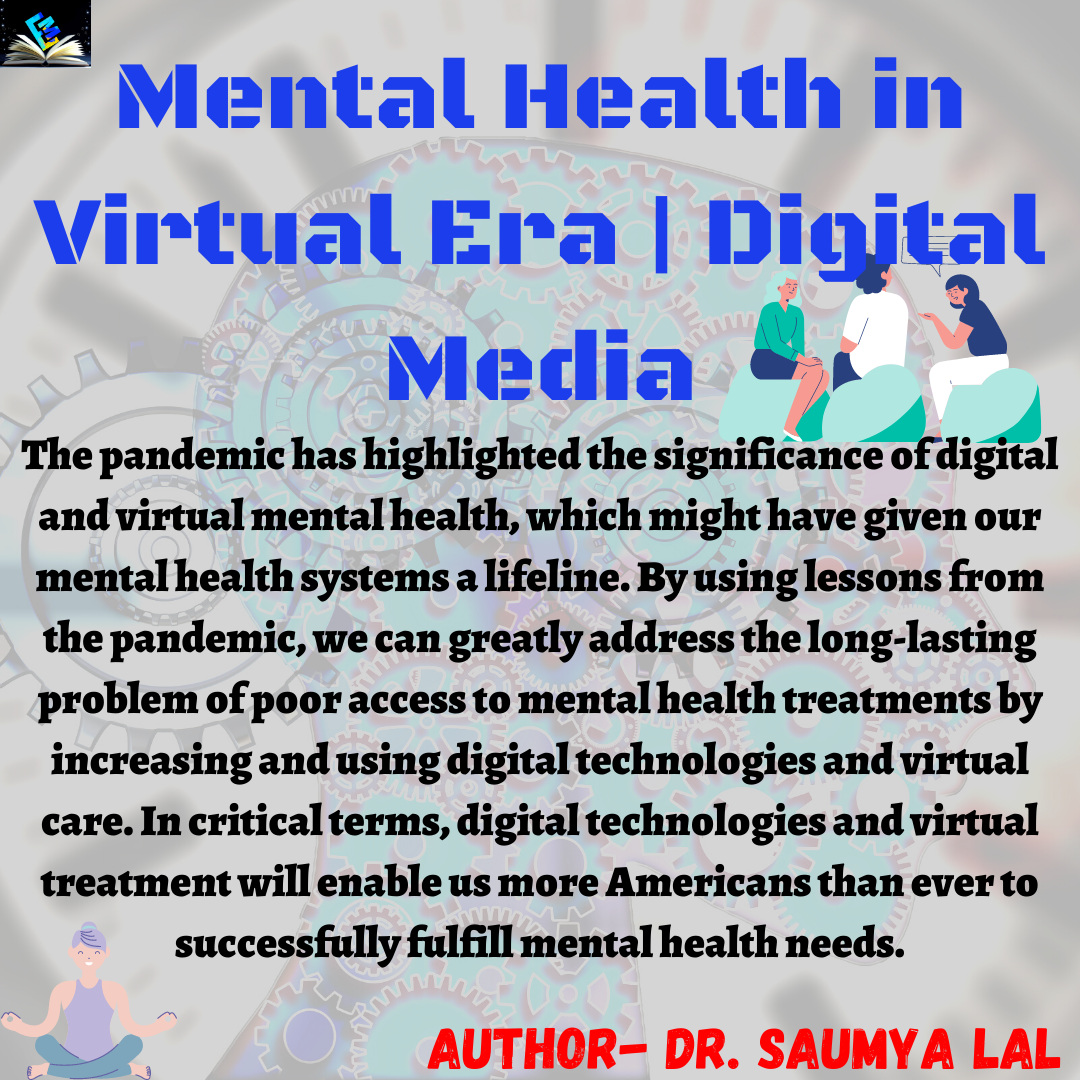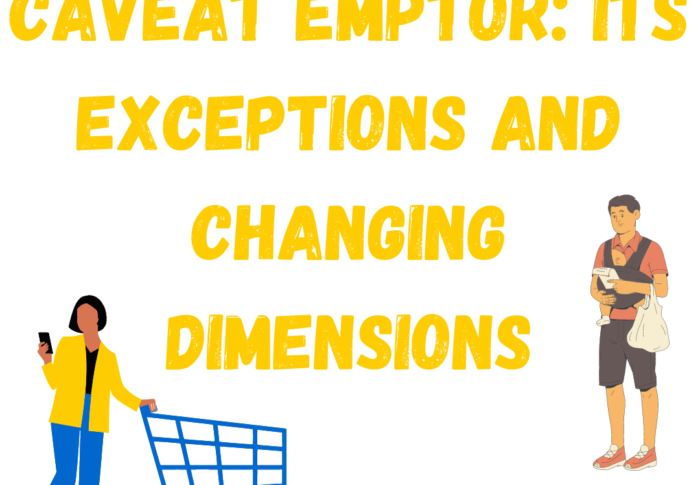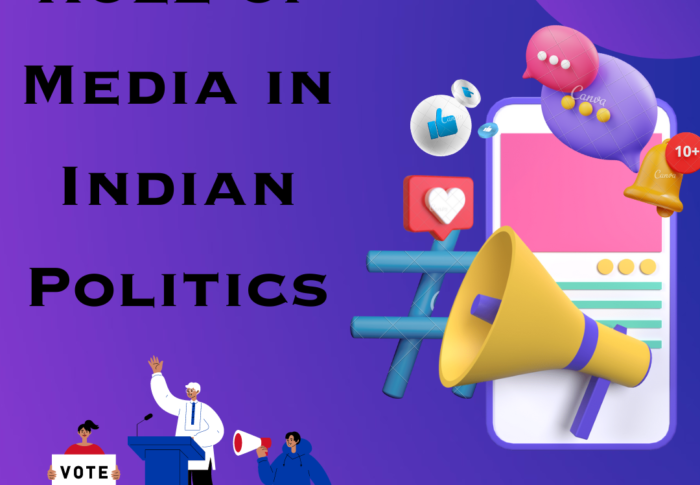
Mental Health in Virtual Era | Digital Media
Author: Dr. Saumya Lal
In this era where technology consumes the largest parts of our lives and the world has shrunk into our fists, digital media has become our only society. With the worsening situation of the Covid-19 pandemic, Mental health has been a rising concern in a life that became practically virtual. This article primarily deals with the topic of mental health in this ‘virtual’ era and seeks to target the effects whether degrading or uplifting, this virtual era has on our mental health.
Mental Wellness
Different academics — mostly psychologists, sociologists, anthropologists, and medical professionals — have studied the link between our virtual life culture and real health that is, digital media consumption and mental health notably since the mid-1990s after the World Wide Web expansion. A large study group has investigated “overuse” problems, usually referred to as “digital dependence,” or “digital dependence.” In various communities and cultures, these occurrences are distinct. Some specialists studied the advantages of moderate digital media usage in other fields, including mental health, and the treatment of issues in mental health using new technology solutions. It is not only lack of mental disease that constitutes mental wellness. Many individuals are not precisely mentally well without symptoms and diagnoses; their life is drained of tension, rumor, preoccupation, or self-morality. But a person may be diagnosed with anxiety, sadness, schizophrenia or any other mental illness – and they are still mentally well.
What Is Mental Health?
In reality, many persons with mental disease diagnoses are often psychologically healthier than others who do not have a mental health care system because they are obliged to keep up with their symptoms. There seem to be the same issues. stated in the world psychiatric association. In 2015 in their essay “Towards a new concept of mental health,” they questioned the WHO definition by mainly emphasizing the fact that the definition of WHO was based on Western ideals. In most areas across the globe, “productivity” is not the only factor that determines mental health and all, much less. To sum up their long definition: mental health is the ability to feel pleasant and terrible feelings and to respond to them via healthy strategies of coping and communication. The difficulty is that it takes a punch to break the bubble.
Virtual Treatment
Clinicians must get acquainted with the best practices of digital mental health to make elementary consultations as successful as individual encounters. Professionals can link distant care settings with specialists at major health centers through secure online conferences. The first two components of the Digital Mental Health basics are Elemental Health, which discusses the role of virtual care in clinical settings, and The use of mobile applications in mental health, which explores using smartphones and mobile apps for mental health care.
Cost provides a further obstacle to telephone treatment. Typically, insurers wouldn’t make phone calls in the test months before COVID-19, allowing the supplier to bear the expense and asking the patients to pay off the pocket to talk to their provider on the phone. For much of 2020, the insurers covered telephone-based mental health care. However, Severe notes that telephone and video consultations are as efficient for certain patients with established relationships with their insurance provider and should be reimbursed similarly by insurers.
Development of Virtual Treatment.
The organizations used internet telemedical therapy on a very limited level before the corona epidemic. Telehealth was essential around the planet. Virtual treatment exists for more than ten years, but in the last year and a half the world has grown more virtually friendly and internationally linked, and individuals have had to adjust to lock-down isolation and limits. Virtual treatment applications have been created to meet increasing demand and to increase virtual therapy’s appeal. But it’s still a strange concept for many traditionalists. Virtual treatment has several main practical benefits. Join a session from anywhere and without having to travel to a certain spot. Join a class during your daybreak or even throughout your trip. No traveling makes it easier and more flexible to schedule. It also provides therapists that could be more suited but located further away with alternatives for accessibility. For therapists, having virtual sessions might allow specific times, which would otherwise not be accessible, to be open, and the lack of a commute could improve overall living quality, reduce burnout and save mental resources necessary to proper treatment for the therapist. At the same time, we still love the tried-and-tested approach. People are social beings and some people may feel more real about the in-person aspect of the therapy meeting. Beyond whether the work is productive or not, there may be a strong preference for meeting in person as it feels safer or more real. Or perhaps it is more difficult to get side-tracked sitting in front of a screen due to zoon weariness in general.
- There is no single-size therapy, like anything else. Some could be good for virtual sessions, while others may not.
- It’s worth an honest shot if you look at it. Because of the pandemic, virtual care and other digital tools assist existing care, scale-up and increased capacity more than before.
- Traditional office trips are replaced by synchronous visits to videos, audio, or asynchronous text message by clinician-based virtual care.
- The creation of a solid ecosystem for end-to-end patient care is increasingly being combined by creative mental health vendors, including guiding patients towards self-care as needed. This combination delivers scalable solutions and flexibility to the mental health system while enhancing customers’ access and convenience.
Conclusion
The Covid-19 epidemic led to a huge growth in the usage of digital and virtual services for mental health. The epidemic and subsequent lockdowns left more patients with few options but without personal care. Clinicians resisting virtual visits suffered catastrophic financial losses and also migrated online. However, it will be crucial to preserve and expand on the improvements in access to care. Many users and doctors have had an excellent experience with digital instruments and online care and the availability and usage of these tools can assist us to meet our mental health concerns when the epidemic declines. Despite rising demand during the epidemic, there has been increased interest in virtual mental health treatments for some time. The fact that tele psyche and elemental health services were in high demand, pre-COVID, is not something most people understand. What COVID accomplished was actually to stimulate their uptake. When the supply of psychiatrists did not grow, the pandemic produced an increased demand for mental health services.
Remarks
The pandemic has highlighted the significance of digital and virtual mental health, which might have given our mental health systems a lifeline. By using lessons from the pandemic, we can greatly address the long-lasting problem of poor access to mental health treatments by increasing and using digital technologies and virtual care. In critical terms, digital technologies and virtual treatment will enable us more Americans than ever to successfully fulfill mental health needs.
Read Related Articles –
Effect of Pandemic on Mental Health of Teenagers
Mail us at info@edumound.com






